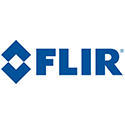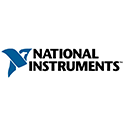TSP #270 - I Can See Sound! FOTRIC TD2 Acoustic Camera Theory, Teardown, Review & Experiments
2.7K 225
In this episode Shahriar takes a look at an acoustic camera. These instruments leverage an array of microphones in interesting arrangements to perform acoustic beamforming and localize the source of sound. Furthermore, they combine this information with a visual camera and produce a scene image where sound sources can easily be identified. Given the fairly broad frequency range (2kHz - 65kHz) of the FOTRIC TDS, it can be used in a wide range of applications:
https://www.fotric.com/td2-acoustic-imaging-camera
This review is organized as follows:
00:00 - Introductions & instrument overview
01:21 - Detailed teardown, system & circuit analysis, theory of operation
13:41 - GUI overview, built-in functions, frequency discriminations, surprise lab noise source
19:03 - Controlled frequency & source tests, audible & low-frequency tests, multi-source
26:15 - Detecting leaks, mechanical noise detection
28:24 - PC software post-analysis
29:28 - Concluding remarks
Please consider supporting The Signal Path:
https://www.TheSignalPath.com/Donate
https://www.Patreon.com/TheSignalPath
Other links:
https://www.TheSignalPath.com
https://www.Twitter.com/TheSignalPath
TSP #269 - Wonderful Complexity of X-Ray Dosimeter Badges! Teardown, Analysis & Theory of Operation
943 73
In this episode Shahriar explores the incredible complexity of x-ray dosimeter badges. These badges are critical in exposure safety measurements and are used by millions of professionals. But how do they work? The x-ray image of the badge reveals its internal structure, x-ray energy discrimination techniques as well as the TLD detectors. The end-to-end operation of the badges are discussed in details as well as the measurement methods.
Please consider supporting The Signal Path:
https://www.TheSignalPath.com/Donate
https://www.Patreon.com/TheSignalPath
Other links:
https://www.TheSignalPath.com
https://www.Twitter.com/TheSignalPath
TSP #268 - Radio Over Fiber Magic! Optical Link Teardown, Characterization & Measurement Techniques
1K 81
In this episode Shahriar presents a deep dive into direct detection optical links. The video covers a wide range of topics from detailed module teardown, optical semiconductor discussions, free-space optic interconnect, theory of operation as well as comprehensive characterization of the end-to-end system behavior. Key chapters of the video are organized as follows:
00:00 - Theory of operation, block diagrams & instrument architecture
08:48 - Detailed teardown, optical module analysis, high-magnification imaging
24:32 - Optical link characterization, Siglent instrument ecosystem, radio-over-fiber demonstrations
Please consider supporting The Signal Path:
https://www.TheSignalPath.com/Donate
https://www.Patreon.com/TheSignalPath
Other links:
https://www.TheSignalPath.com
https://www.Twitter.com/TheSignalPath
TSP #267 - Power Supply from Hell! Surprising Repair of the Condor SP1016 Arcade Power Supply
1.4K 152
In this episode Shahriar takes a look at a 1984 Condor power supply from an old arcade machine. Multiple repair attempts of this supply had failed. Examining the schematics reveals how easily this power supply can self-destruct if the primary NPN switching transistor would fail.
The power supply arrived with a bag of replacement components including the power NPN device. But something doesn't seem right with the parts. Taking apart the original and replacement transistor tells us everything we need to know...
Please consider supporting The Signal Path:
https://www.TheSignalPath.com/Donate
https://www.Patreon.com/TheSignalPath
Other links:
https://www.TheSignalPath.com
https://www.Twitter.com/TheSignalPath
TNP #55 - Lab Upkeep Time! Agilent 3458A 8.5 Digit Multimeter & MSO9404A 4GHz, 20GS/s Scope Repairs
1.1K 54
In this quick episode Shahriar performs some regular lab maintenance. Two instrument need attention. The Agilent 3458A is reporting a Nonvolatile Memory Error & and the Agilent MSO9404A is reporting a dead CMOS battery.
Both problems are easily addressed by changing the battery backup. In the case of the 3458A, the calibration content has to be re-programed into the new NVRAM ICs.
Please consider supporting The Signal Path:
https://www.TheSignalPath.com/Donate
https://www.Patreon.com/TheSignalPath
Other links:
https://www.TheSignalPath.com
https://www.Twitter.com/TheSignalPath
TSP #266 - Agilent 6GHz MXG Vector Signal Generator (N5182A) Teardown, Repair & Frac-N PLL Analysis
1.8K 80
In this episode Shahriar repairs an Agilent N5182A MXG Vector Signal Generator. The instrument produces the correct output signal for some set frequencies but reports a Fractional-N Unlock error for others while the output signal completely disappears. The instrument also fails many self-test checks.
The block diagram of the unit is described in details with a measurement strategy to analyze every element of the PLL loop. The band-pass filter banks are isolated and measured with a Siglent network analyzer and are shown to be fully functional. The VCO output amplifiers & doubler are also fully functional and tested using a Siglent spectrum analyzer. The PLL loop is then "overwritten" and manually adjusting the VCO control voltage demonstrates that the oscillator can cover its entire designed tuning range. The fractional-N divider also appears functional for the appropriate input frequency ranges. Finally, although the GaAs phase detector appear functional, it is possible for such a component to slowly degrade where the phase detection gain changes significantly. This custom Agilent part is sourced from a donor board and the instrument now functions across all frequency ranges and passes all self-tests.
The phase noise performance of the unit is verified against the datasheet using an Agilent E5052B signal analyzer with cross-correlation capability.
Please consider supporting The Signal Path:
https://www.TheSignalPath.com/Donate
https://www.Patreon.com/TheSignalPath
Other links:
https://www.TheSignalPath.com
https://www.Twitter.com/TheSignalPath
TSP #265 - Thermal Camera Cooled to -196C! Cryogenic HgCdTe (MCT) Long-Wave Infrared Detector Magic
1.1K 89
In this video Shahriar dives into the amazing science & engineering of cryogenically cooled thermal cameras. This particular model, Inframetrics 760 Imaging Radiometer, was manufactured in the 1990's and leverages a range of clever engineering techniques. It includes a miniaturized Stirling engine cryocooler, galvanometer based mirrors for 2D field scanning as well as a low-noise Mercury-Cadmium-Tellurite (HgCdTe) MCT detector sensitive in the 4-15um wavelength.
Teardown of the unit along with a detailed theory of operation is presented. The semiconductor profile and properties of MCT detectors are also discussed. Furthermore, a different thermal camera using a Joule-Thomson cryocooler and high-pressure (3000 PSI) Argon source is also shown.
After reverse engineering the critical detector interfaces, an experiment is devised to measure the thermal signature of a resistor. The setup includes a triangle wave driving a resistor to generate a time varying thermal source, Lakeshore M81 source-measure lock-in amplifier and chopper in front of the MCT detector and BLDC motor driver for running the cryocooler. The measurement demonstrates the functionality & sensitivity of the detector to capture black body radiation.
Please consider supporting The Signal Path:
https://www.TheSignalPath.com/Donate
https://www.Patreon.com/TheSignalPath
Other links:
https://www.TheSignalPath.com
https://www.Twitter.com/TheSignalPath
TNP #54 - How Much Money Does YouTube Pay The Signal Path? Also Oscilloscope Giveaway Time!
1.8K 628
In this episode Shahriar shares the total ad revenue of The Signal Path since its inception in May 2011.
There is also another oscilloscope giveaway! This time it will be a Siglent SDS1000X HD, 4-Channel Oscilloscope. The winner will be randomly selected in one month.
Please consider supporting The Signal Path:
https://www.TheSignalPath.com/Donate
https://www.Patreon.com/TheSignalPath
Other links:
https://www.TheSignalPath.com
https://www.Twitter.com/TheSignalPath
TSP #264 - Lakeshore M81 Synchronous Source Measure System (SSM) Review, Teardown & Experiments
618 54
In this episode Shahriar reviews the newly released Lakeshore M81 Synchronous Source Measure System. This unique product combines three key metrology techniques into one: source/measure capability, high-dynamic range remote-heads and lock-in capability while maintaining both DC and AC modes. In my view, this is an entirely new instrumentation category:
https://www.lakeshore.com/products/product-detail/m81/the-m81-ssm-instrument
This review is organized as follows:
00:00:00 - Introductions
00:00:35 - Why is the M81 system a new type of instrumentation category?
00:04:51 - Instrument overview, font/back panels, module interfaces
00:07:42 - Complete teardown of all modules & mainframe
00:21:05 - AC & DC performance verifications, detailed GUI overview, mainframe usability
00:36:31 - Full BJT characterization, IV trace, thermal effects, MeasureLINK platform, sequencing measurements, scripting capabilities
00:46:28 - AC voltage & current linearity, THD & spurious performance verifications
00:51:48 - Lock-in capability, characterization of RC circuit phase response, harmonic measurement, DC + AC capabilities
00:59:37 - Ultrasonic liquid level measurement setup, lock-in phase tracking, MeasureLINK plotting over time
01:02:28 - Lock-in with externally modulate signals, photovoltaic effect of a glass-package diode, chopper signal synchronization
01:06:59 - Additional possible experiments, Lakeshore white papers
01:07:50 - Recommendations & concluding remarks
Please consider supporting The Signal Path:
https://www.TheSignalPath.com/Donate
https://www.Patreon.com/TheSignalPath
Other links:
https://www.TheSignalPath.com
https://www.Twitter.com/TheSignalPath
TSP #263 - The Greatest RF Show on Earth! IEEE Microwave Symposium Exhibition, San Francisco 2025
1.6K 46
In this episode Shahriar visits the Industry Exhibition during the IMS Microwave Week held in San Francisco CA this year:
https://ims-ieee.org/2025ExhibitorInformation
Although it is impossible to capture everything at this amazing event, here is a look at some of new products and components from 16 of the vendors at the show:
00:00 - Introductions
00:26 - R&S: https://rohde-schwarz.com
12:29 - Samtec Glass Core: https://www.samtec.com/gct
14:08 - Keysight: https://keysight.com
24:36 - MPI Corp: https://mpi-corporation.com
28:04 - Zurich Instruments: https://www.zhinst.com
29:32 - Z-Communications: https://www.zcomm.com
31:31 - Focus Microwave: https://focus-microwaves.com
36:05 - Siglent: https://siglentna.com
38:07 - Leap Wave: https://leapwavetech.com
39:46 - Spinner: https://www.spinner-group.com
42:00 - Eravant: https://eravant.com
43:48 - Signal Hound: https://signalhound.com
47:02 - Dassault: https://www.3ds.com/products/simulia/ivcad-suite
48:24 - VDI: https://vadiodes.com
52:20 - TransSiP: https://www.transsip.com
54:10 - Microsanj: https://microsanj.com
55:21 - Closing remarks
Please consider supporting The Signal Path:
https://www.TheSignalPath.com/Donate
https://www.Patreon.com/TheSignalPath
Other links:
https://www.TheSignalPath.com
https://www.Twitter.com/TheSignalPath
TSP #262 - Tesla Model Y Indoor Cabin Radar Teardown & Deep Analysis of SoC, Package, Antennas & PCB
2.9K 224
In this episode Shahriar takes a close look at the Tesla Model Y Indoor Cabin 60GHz radar module. This deep analysis video covers a lot of ground starting with the mechanical design of the module. The primary PCB is studied with attention to power management, vehicle interfaces, choice of radar SoC chipset, antenna design, isolation & RF routing.
The PCB is further examined using X-Ray fluorescence to confirm the use of silver immersion as a surface finish. Furthermore, leveraging Raman spectroscopy the material composition of the radar radome is also examined. The radar chipset package is also analyzed by using an x-ray image.
The main TI radar SoC is removed from the packaged and after studying the block diagram of the integrated circuits, the bare die is examined under a high power microscope for a silicon design reverse engineering.
I hope to see you at the IEEE IMS & RFIC event in San Francisco, California, USA this year in June 15th, 2025:
https://ims-ieee.org/
And here is a teaser to my Technical Lecture at the IEEE RFIC Conference:
https://rfic-ieee.org/technical-program/technical-lectures?date=2025-06-15
Please consider supporting The Signal Path:
https://www.TheSignalPath.com/Donate
https://www.Patreon.com/TheSignalPath
Other links:
https://www.TheSignalPath.com
https://www.Twitter.com/TheSignalPath
TSP #261 - Sencore PA-81 Stereo Power Amplifier Analyzer Teardown, Repair & Experiments
890 55
-= Description coming soon! =-
Please consider supporting The Signal Path:
https://www.TheSignalPath.com/Donate
https://www.Patreon.com/TheSignalPath
Other links:
https://www.TheSignalPath.com
https://www.Twitter.com/TheSignalPath









